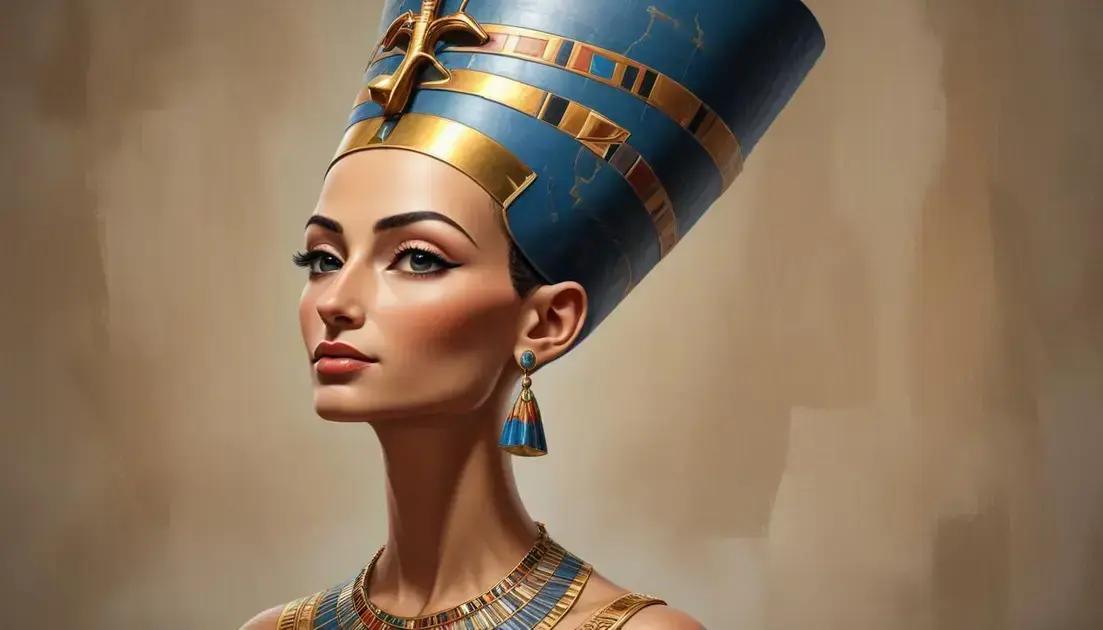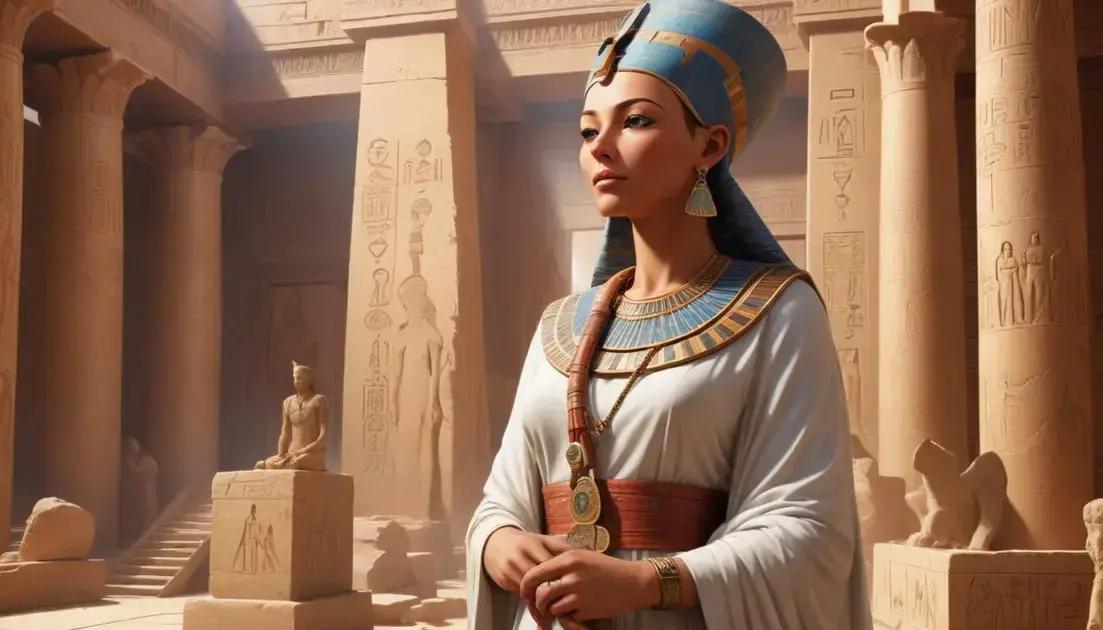
The Pyramids of Egypt: Technology, Religions and Pharaonic Power
The Pyramids of Egypt stand as iconic symbols of ancient civilization, showcasing impressive engineering, deep religious significance, and political power. Constructed as grand tombs for pharaohs, they reflect a society that valued the afterlife and divine leadership. Today, the Pyramids continue to influence modern culture, inspiring art, media, and tourism, while also reminding us of human achievement and the complexity of history.
Have you ever wondered about the Pyramids of Egypt? These monumental structures not only capture our imagination but also reveal fascinating insights into ancient civilization. Let’s explore their story!
Introduction to the Pyramids
The Pyramids are some of the most famous structures in the world. They stand tall in the sands of Egypt, drawing tourists and historians alike. But what makes these pyramids so special? Let’s take a closer look.
History of the Pyramids
The Pyramids were built over 4,500 years ago. They served as tombs for pharaohs. These ancient kings believed in the afterlife. So, they wanted to be buried in grand places.
How They Were Built
Building the Pyramids was not easy. Workers moved huge stones from distant quarries. They used simple tools, levers, and ramps. It took years to complete each pyramid. Can you imagine the teamwork it required?
The Purpose of the Pyramids
The main purpose of the Pyramids was to honor pharaohs and prepare them for the afterlife. They were filled with treasures for the journey ahead. The design also aimed at helping their souls reach the heavens.
Fun Facts About the Pyramids
Did you know that the Great Pyramid of Giza is one of the Seven Wonders of the Ancient World? It is the only one still standing today! Its precise construction and massive scale amaze people even now.
Visitors often wonder how these structures have lasted so long. The secret lies in their smart design and durable materials. Many have survived thousands of years of harsh weather conditions.
Technology Behind Construction
The technology used to build the Pyramids is quite fascinating. Ancient Egyptians had to innovate to create these massive structures. They relied on simple tools and clever techniques that are still impressive today.
Tools Used in Construction
Workers used tools like chisels, levers, and wooden sledges. These basic tools helped them carve and move huge stones. It’s amazing to think how manual labor shaped these wonders.
Transporting the Stones
Transporting stones was a huge challenge. Workers often used sledges to carry heavy blocks. They poured water on the sand to reduce friction. This technique made it easier to slide the stones over long distances.
Building Techniques
Once at the site, workers used ramps to lift stones into place. They built these ramps from mud, brick, or stone. The ramps allowed them to raise blocks high enough to complete the pyramid.
Examples of Engineering Skills
The precision of the Pyramid’s design shows advanced engineering skills. Architects used basic mathematics to ensure everything was lined up perfectly. They even aligned the pyramids with the North Star!
These remarkable feats of technology reflect a society that valued craftsmanship. Their ability to plan and execute grand designs still amazes people today.
Religious Significance
The Pyramids are more than just amazing structures. They hold deep religious significance for ancient Egyptians. These monumental buildings were created to honor their pharaohs and reflect their beliefs.
Belief in the Afterlife
Ancient Egyptians believed in an afterlife. They thought that their pharaohs would need items for their journey. That’s why the Pyramids were filled with treasures like jewelry and food.
Connecting Heaven and Earth
The Pyramids served as a link between earth and the heavens. They were designed to help the pharaoh’s soul rise to the sky. The shape of the pyramid is thought to represent the rays of the sun.
Gods and Goddesses
Worshiping gods and goddesses was important in ancient Egypt. They built pyramids to honor these deities. The gods were believed to protect the pharaohs in the afterlife.
Funerary Rituals
Many rituals were performed in the Pyramids. These rituals helped guide the pharaoh’s spirit. Priests played a key role, offering prayers and sacrifices to ensure their safe passage.
The religious practices surrounding the Pyramids show the deep faith of the Egyptians. Their beliefs shaped not just their lives, but also their architectural wonders.
Pharaonic Power and Politics
Pharaonic power and politics played a major role in ancient Egypt. The pharaohs were more than just rulers. They were considered gods on earth, with absolute control.
The Role of the Pharaoh
The pharaoh was the highest authority in Egypt. He made laws, collected taxes, and led the military. The people believed he communicated with the gods.
Building Projects as Political Tools
Building projects, like the Pyramids, showed the pharaoh’s strength. These grand structures displayed power and wealth. They also provided jobs for thousands of workers.
Control Through Religion
The pharaoh used religion to reinforce his power. By presenting himself as a divine leader, he gained loyalty. The Pyramids reflected religious beliefs and ensured a place in the afterlife.
The Impact of Politics
Politics in ancient Egypt were often influenced by family ties. Pharaohs married within their families to keep power concentrated. This practice helped maintain a strong dynasty.
In times of crisis, pharaohs could face challenges. Revolts or natural disasters sometimes threatened their rule. However, strong leaders could adapt and maintain control.
Impact on Modern Culture
The Pyramids have left a lasting mark on modern culture. They inspire art, literature, and even movies. Many people dream of visiting these ancient wonders.
Influence on Art and Design
Artists often draw inspiration from the Pyramids. Their unique shape and grandeur show up in paintings, sculptures, and architecture. Even in modern buildings, you can see pyramid shapes reflected.
Representation in Media
In movies, the Pyramids often symbolize mystery and adventure. Films like “The Mummy” have made them iconic. This fascination keeps the stories and allure of the Pyramids alive.
Tourism and Education
Tourism around the Pyramids brings education and awareness. Millions visit each year, eager to learn about ancient Egypt. Museums also display artifacts that highlight their significance.
Inspirational Messages
The Pyramids remind us of the power of human achievement. They show what can be accomplished with determination and teamwork. This message resonates with people today.
Ultimately, the Pyramids continue to shape culture. They connect the past with the present, showing us the rich history of humanity.
Conclusion
In conclusion, the Pyramids of Egypt continue to fascinate us with their grandeur and history. These remarkable structures reflect the strength of ancient Egyptian culture, showcasing their dedication to religion, politics, and engineering. The impact of the Pyramids reaches far into modern times, influencing art, media, and travel.
They inspire millions to explore and learn about the past. As symbols of human achievement, the Pyramids remind us of what we can accomplish when we work hard and dream big. Understanding their significance helps connect us to our shared history and the incredible stories of those who built them.


